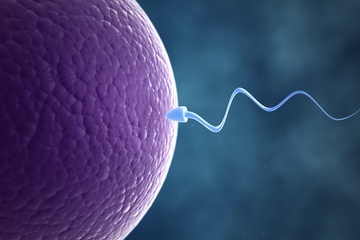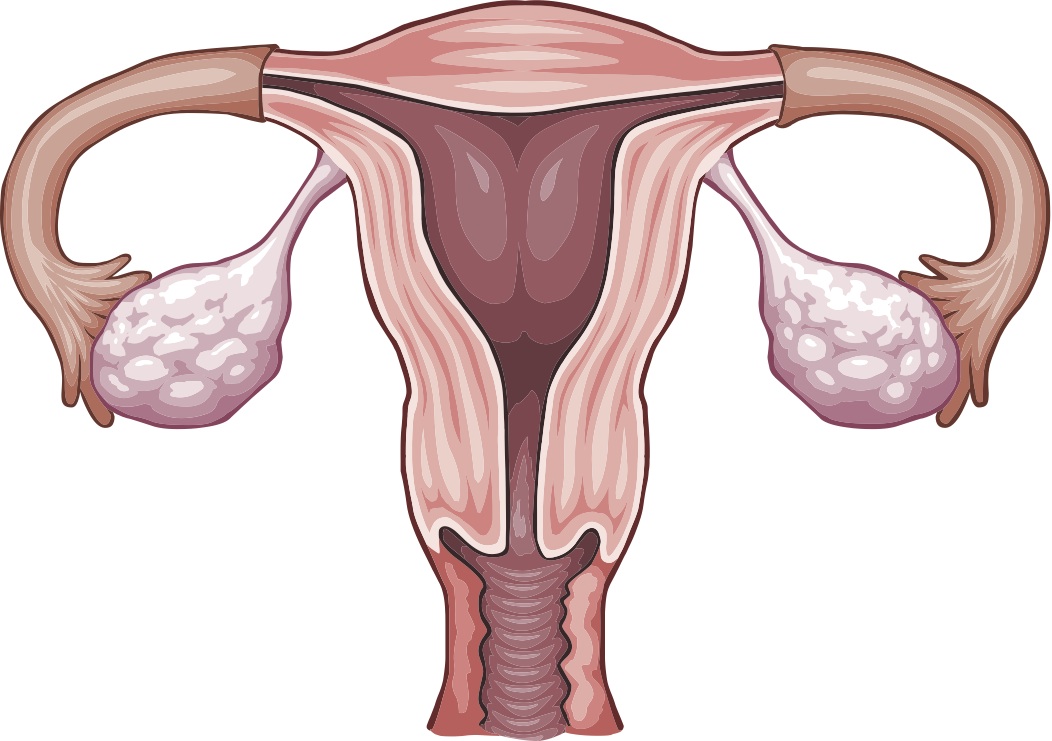11 Surprising Facts About the Reproductive System
Surprise!

The reproductive system is a collection of internal organs and external genitalia that work together to generate new life. The female reproductive system is made up of a number of different parts, most notably the vagina, uterus and egg-producing ovaries. The male reproductive system consists of the penis, scrotum and testicles, as well as various internal accessory organs, such as the prostate gland and the seminal vesicles, which produce most of the fluid that makes up the ejaculate.
Here are 11 surprising facts about the reproductive system.
The reproductive system contains the largest and smallest human cells

Human cells come in a variety of shapes and sizes, and carry out a wide range of different functions. But the largest and smallest cells in the human body are both gametes, or reproductive cells.
Males produce the smallest human cell — the sperm, which is only 5 micrometers by 3 micrometers in size, not including the sperm's "tail." By comparison, the red blood cell is about 8 micrometers in diameter, or about a tenth of the diameter of a human hair.
A female's ovum, or egg, is the largest human cell, coming in at about 120 micrometers in diameter.
The average penis size is less than 6 inches long

In America, the average penis stands erect at 5.6 inches (14.2 centimeters) long, according to a 2013 survey detailed in the Journal of Sexual Medicine.
Though 5.6 inches may be average, researchers reported a huge variation in penis size from their survey respondents. The smallest erect penis reported was 1.6 inches (4 cm) long, while the largest penis was 10.2 inches (26 cm) long.
Get the world’s most fascinating discoveries delivered straight to your inbox.
The vagina has something in common with tomatoes: they're both acidic

Tomatoes are quite acidic, with a pH that varies between 4.0 and 4.7 (7 is considered neutral), according to the Food and Drug Administration. The pH of the vagina averages 4.5.
So why is the vagina so acidic?
The vagina is home to numerous microorganisms that can thrive only in an acidic environment, such as the lactic acid-producing bacteria, Lactobacillus. Without these beneficial bacteria standing guard, other pathogenic (disease-causing) bacteria could move in and take over the vaginal ecosystem.
Men have vastly more gametes than women

A huge difference exists between the number of gametes men and women produce. At birth, women have 1 million to 2 million eggs, but only about 300,000 eggs will be left by the time puberty hits, according to WebMD. Only 300 to 400 of these eggs will be ovulated before menopause.
Each man, on the other hand, produces more than 500 billion sperm cells in his lifetime. During ejaculation, a healthy man can release upward of about 1.2 million sperm cells — that's more gametes released in a single moment than some woman ever have.
Ancient Egyptians used contraception thousands of years ago

You might think contraception is a new invention, but birth control may have gotten its start nearly 4,000 years ago, according to a 2011 article in the Journal of Family Planning and Reproductive Health Care.
The earliest written record of contraception comes from the Egyptian Kahun Gynaecological Papyrus, which dates back to 1825 B.C. One birth control method mentioned in the document required a doctor to apply honey to the inside of the vagina while the woman lay on a bed of sodium carbonate.
Another contraceptive technique involved crocodile dung, which may have been packed against the cervix or burned as an incense (the text is unclear on the manure's exact use).
Male and female reproductive parts were once described using "one-sex" terms

Until the late 17th century and early 18th century, physicians held to the "one-sex" reproductive model of thinking, which was championed by Greek physician Galen of Pergamon almost 2,000 years ago. Though people noticed the obvious physical differences between the sexes, they viewed the male and female reproductive organs as being homologous counterparts to one another.
In Galen's view, for example, women's reproductive parts mirrored men's reproductive parts: The vagina is a female's inverted penis, the labia is her foreskin, the uterus is her scrotum and the ovaries are her testes.
In fact, the terms to describe the female reproductive organs, including vagina, uterus and ovaries, didn't emerge until at least the 17th century. (Before that time, male terms were used to describe both male and female parts.)
Infertility is more common than you may think

In medicine, a couple is considered infertile if they are unable to become pregnant after a year of unprotected sex. In the United States, almost 1 in 6 adult couples are infertile, according to a 2013 study in the journal Fertility and Sterility. The study did not look at whether a couple's infertility was more likely to be due to fertility problems in the man or the woman.
But infertility is not on the rise. In fact, research shows that infertility rates among women have dropped over the last three decades.
Some animals have very strange reproductive systems

The internal body systems of animals are often similar to ours, but there's a remarkable variation in reproductive systems in the animal kingdom.
For example, female kangaroos have three vaginas. The two lateral vaginas are used for accepting sperm during mating, and the central vagina is used for birthing. Male kangaroos have a two-pronged penis to inseminate the lateral vaginas.
Most birds, on the other hand, don't have penises or vaginas. Both sexes have what's called a cloaca — it's a single orifice used for waste and reproduction.
Some people are born with two uteruses

During normal fetal development, the uterus starts off as two small tubes, which then join to create a single, hollow organ (the womb). But sometimes the tubes don't join completely, and instead develop into two separate structures, according to the Mayo Clinic. This condition is called uterus didelphys, or double uterus, and it reportedly affects about 1 in 2,000 women worldwide.
Remarkably, the two uteruses can both function normally. In 2011, a 24-year-old woman named Andreea Barbosa gave birth to twins, who each developed in their own private womb.
Related: Woman born without a vagina speaks out about rare condition
Castration for singing was once common

The testicles are not only important for reproduction; they're also vital for normal development during puberty because they produce various sex hormones. In particular, the testes produce testosterone, which is responsible for the development of secondary sex characteristics, including voice deepening and the growth of facial and body hair.
In the 17th and 18th century in Italy, thousands of prepubescent boys were castrated each year, according to the BBC. Poor parents put their children to the knife in hopes that they would rise to the ranks of the castrati— superstars of the opera and choirs of the churches and royal palaces, who were prized for their powerful, high-pitched voices.



